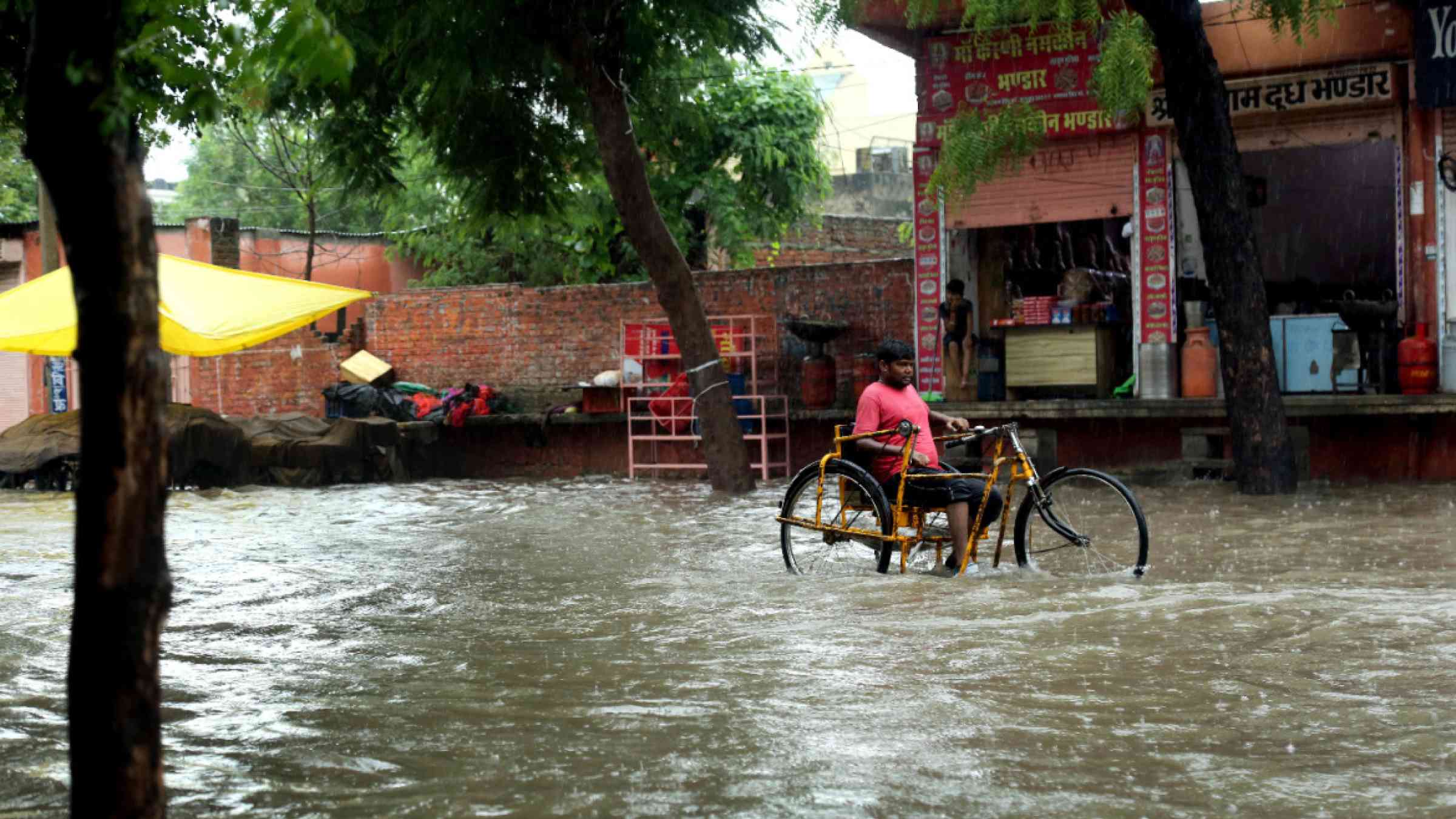UN 2013 global survey explains why so many people living with disabilities die in disasters

10 October 2013, GENEVA – The results of the first-ever UN global survey of persons living with disabilities on how they cope with disasters, illustrates why they die, or are injured, in disproportionate numbers in disasters. An estimated 15% of the world’s population lives with some form of disability.
Whether in multi-hazard prone United States of America or Bangladesh, earthquake-prone Italy or flood-prone Thailand, people living with disabilities across the world say they are rarely consulted about their needs and only 20% could evacuate immediately without difficulty in the event of a sudden disaster event, the remainder could only do so with a degree of difficulty and 6% would not be able to do so at all.
If given sufficient time, the percentage of those who could evacuate with no difficulty rises from 20% to 38% but 58% feel they would still have either some, or a lot of, difficulty while 4% would still not be able to evacuate.
The fact that the percentage of those who could evacuate with no difficulty almost doubles if they are given sufficient time, underlines the importance of early warning systems and ensuring that warnings reach all members of the community regardless of any mobility or communication challenges.
The Head of the UN Office for Disaster Risk Reduction (UNISDR), Margareta Wahlström, said: “The results of this survey are shocking. It clearly reveals that the key reason why a disproportionate number of disabled persons suffer and die in disasters is because their needs are ignored and neglected by the official planning process in the majority of situations. They are often left totally reliant on the kindness of family, friends and neighbours for their survival and safety.
“I would like to express my gratitude to the 5,450 people from 126 countries who have made the effort, sometimes with the help of a relative or friend, to fill in this survey which provides us with a new insight into how to build a world more resilient to disasters for both disabled and able-bodied people.
“UNISDR will ensure that their knowledge and experiences are taken fully into consideration at the 2015 World Conference on Disaster Risk Reduction when UN Member States meeting in Japan will adopt a new global framework for disaster risk reduction to replace the current Hyogo Framework for Action.”
The top five hazards or disaster risks faced by survey respondents were floods, 54%; extreme weather, 40%; tornados, 39%; drought, 37%; and earthquakes, 27%.
The challenges of evacuation are obvious from the high percentages of survey respondents who have a degree of difficulty either hearing (39%) or seeing (54%), walking or climbing steps (68%), and difficulty communicating (45%).
The 22-question survey also highlights that 71% of respondents have no personal preparedness plan for disasters and only 31% always have someone to help them evacuate while 13% never have anyone to help them.
Just 17% of respondents were aware of a disaster management plan in their city/town/ community and just 14% said they had been consulted on it.
At the same time, 50% of respondents expressed a wish to participate in community disaster management while a further 21% were not sure, and 24% said no.
The responses received in time for analysis in advance of International Day for Disaster Reduction on October 13, were 52% female and 48% male. UNISDR has decided to continue the survey until the end of the year to expand the sample.
Some personal responses:
“If I have prior knowledge bad weather is going to occur overnight, I sleep in my wheelchair so that I can take cover quickly.”
“Would take my service dog and go in my bathroom for tornado.”
“Because I can’t hear sirens, when there is severe weather, I have to stay awake to watch storms until all gone.”
“I stock up on circulatory medicine, legwarmers, heat pads and try to save up enough for extra heating bills during cold spells in the winter. I try to have enough supplies that don’t rely on electricity in case of power outages.”
Recommendations from respondents for the next global agreement on disaster risk reduction:
- Community awareness – people need to think about the needs of their neighbours and realize the potential issues people living with disabilities will face in the event of a catastrophe;
- Wheelchair access is needed for evacuations and there’s a need for access to electricity in all emergency shelters;
- Inclusion of disability must be a central concern in all emergency communications;
- Offer disaster risk reduction apps on the phone for people with disabilities;
- Appropriate accommodation to meet the needs of people living with disabilities in emergency shelters;
- A solid plan for replacement of life-saving medications during emergencies;
- Cost-effective technologies to help disabled people evacuate buildings;
- In emergency situations, “don’t work with colors or small letters, I am colour blind”.